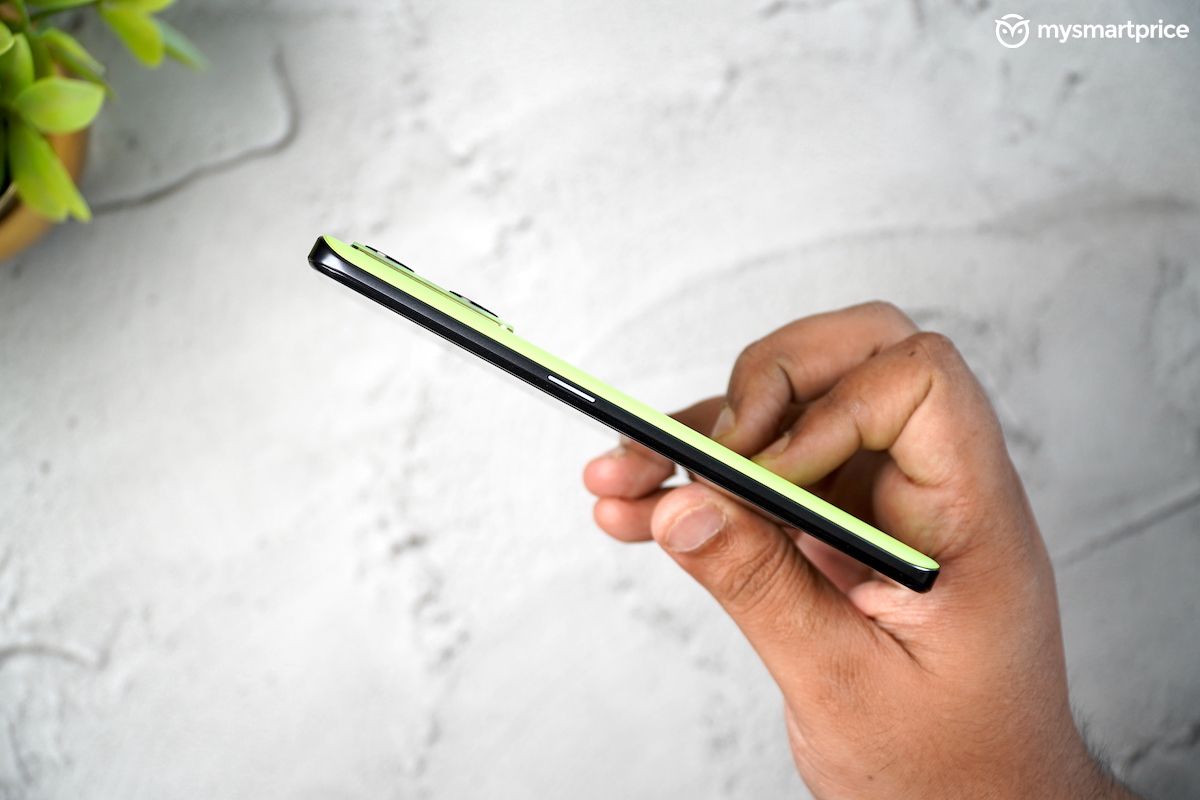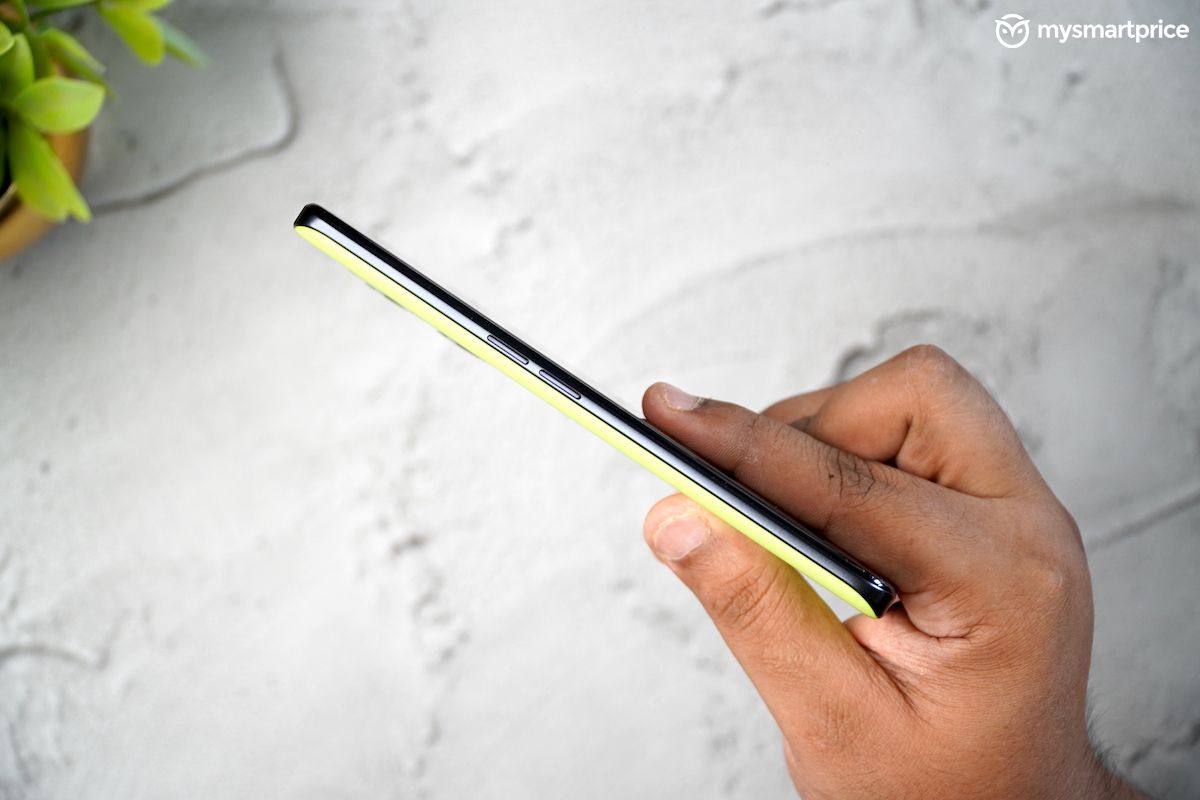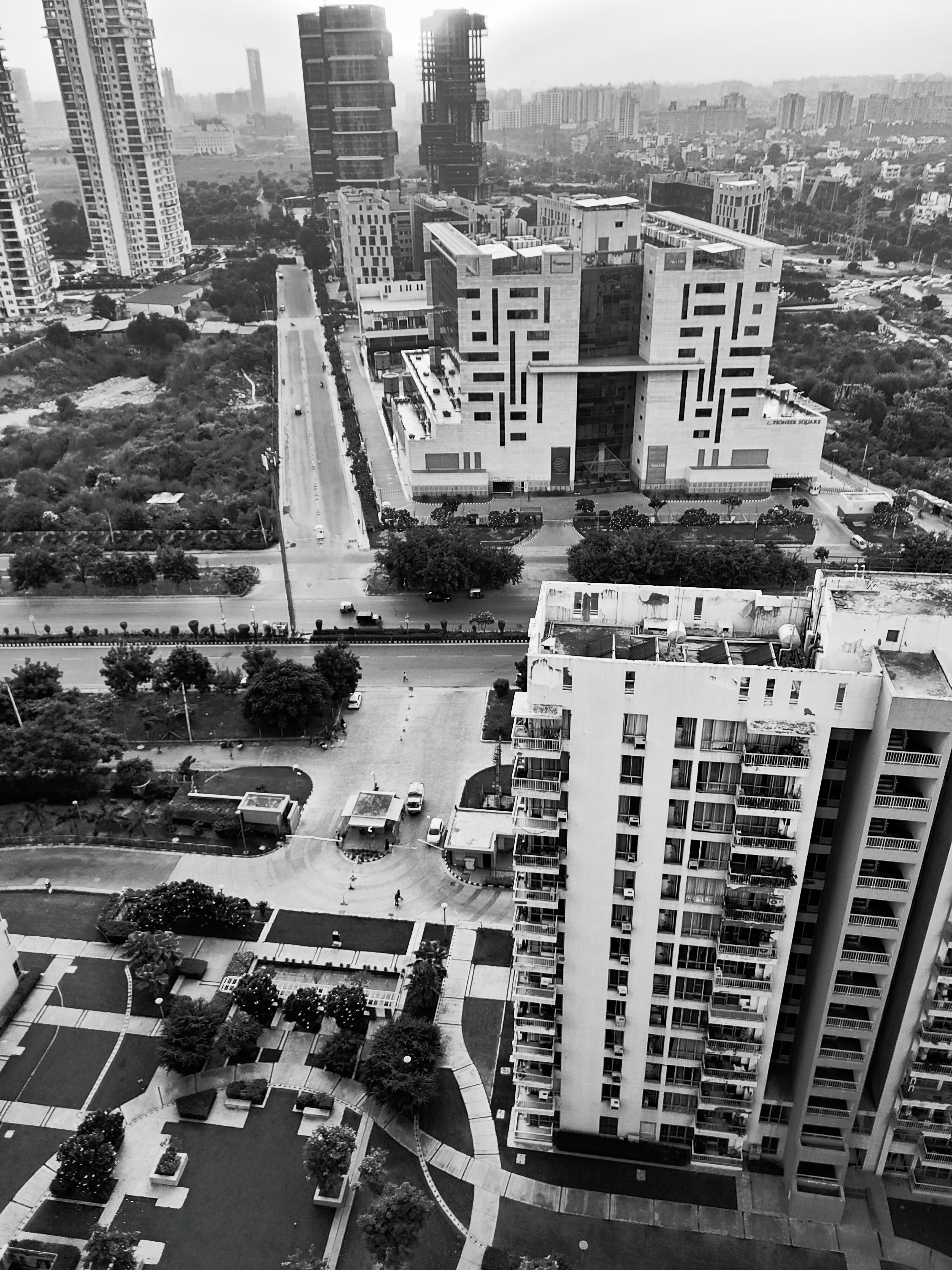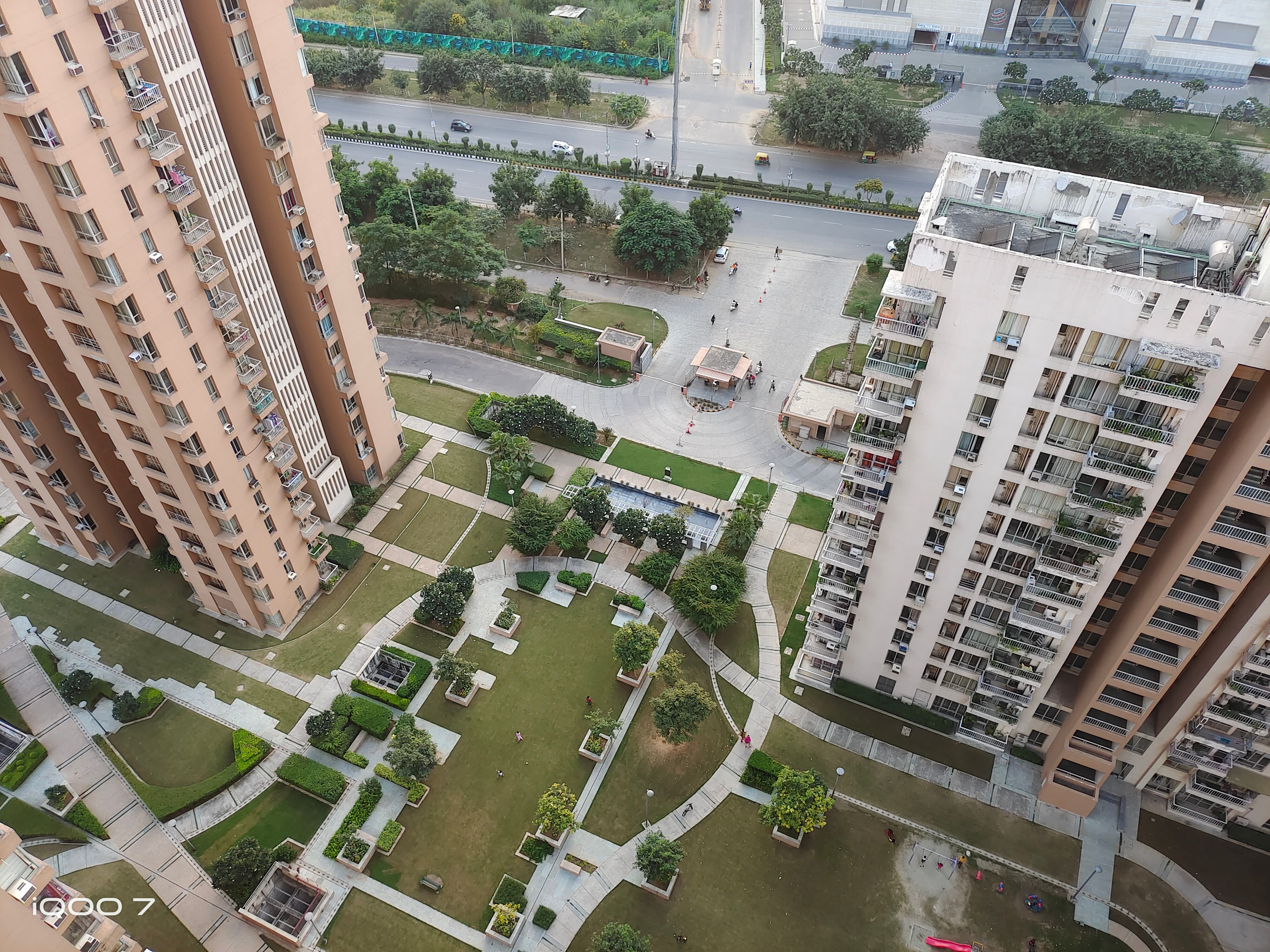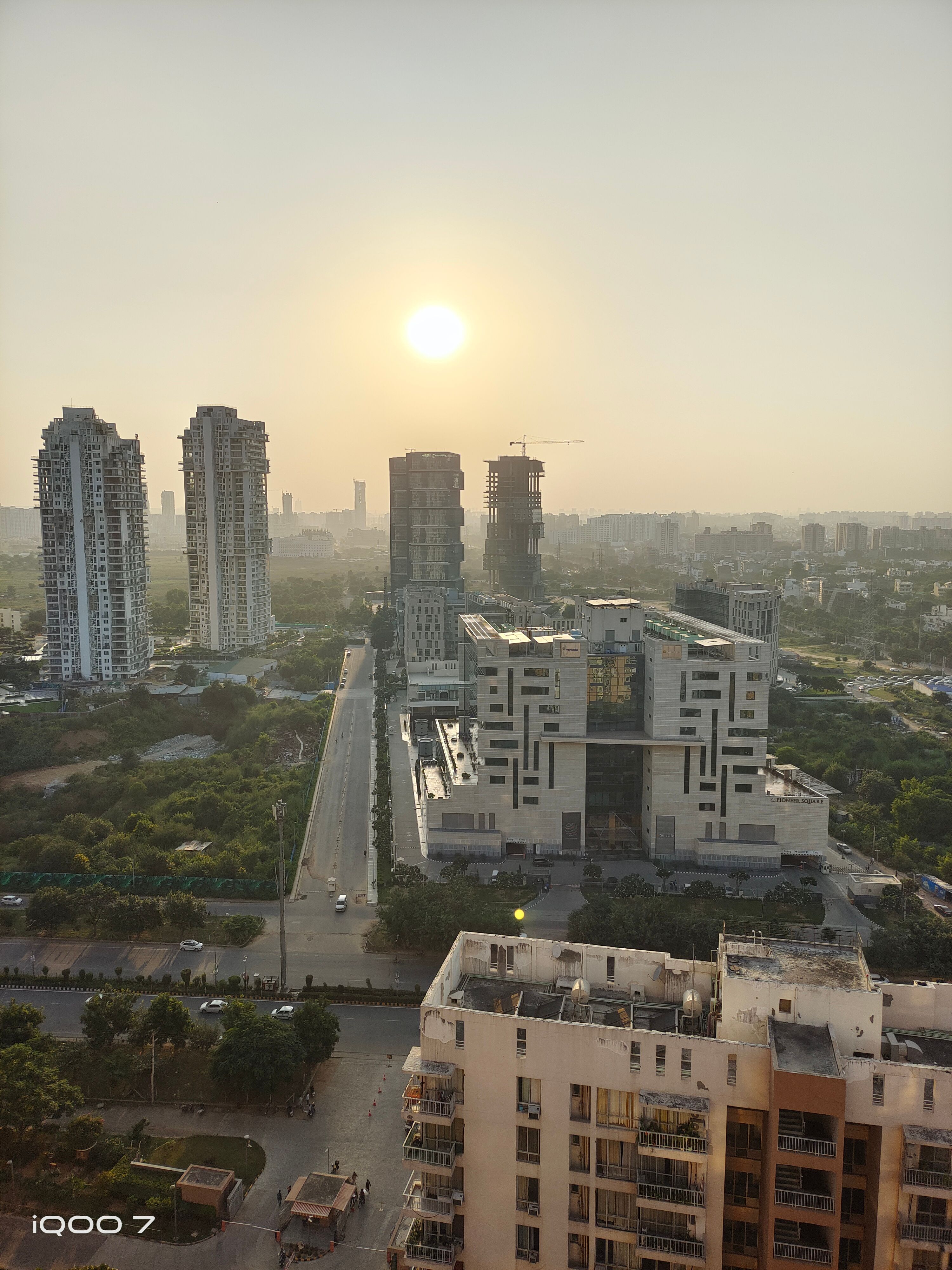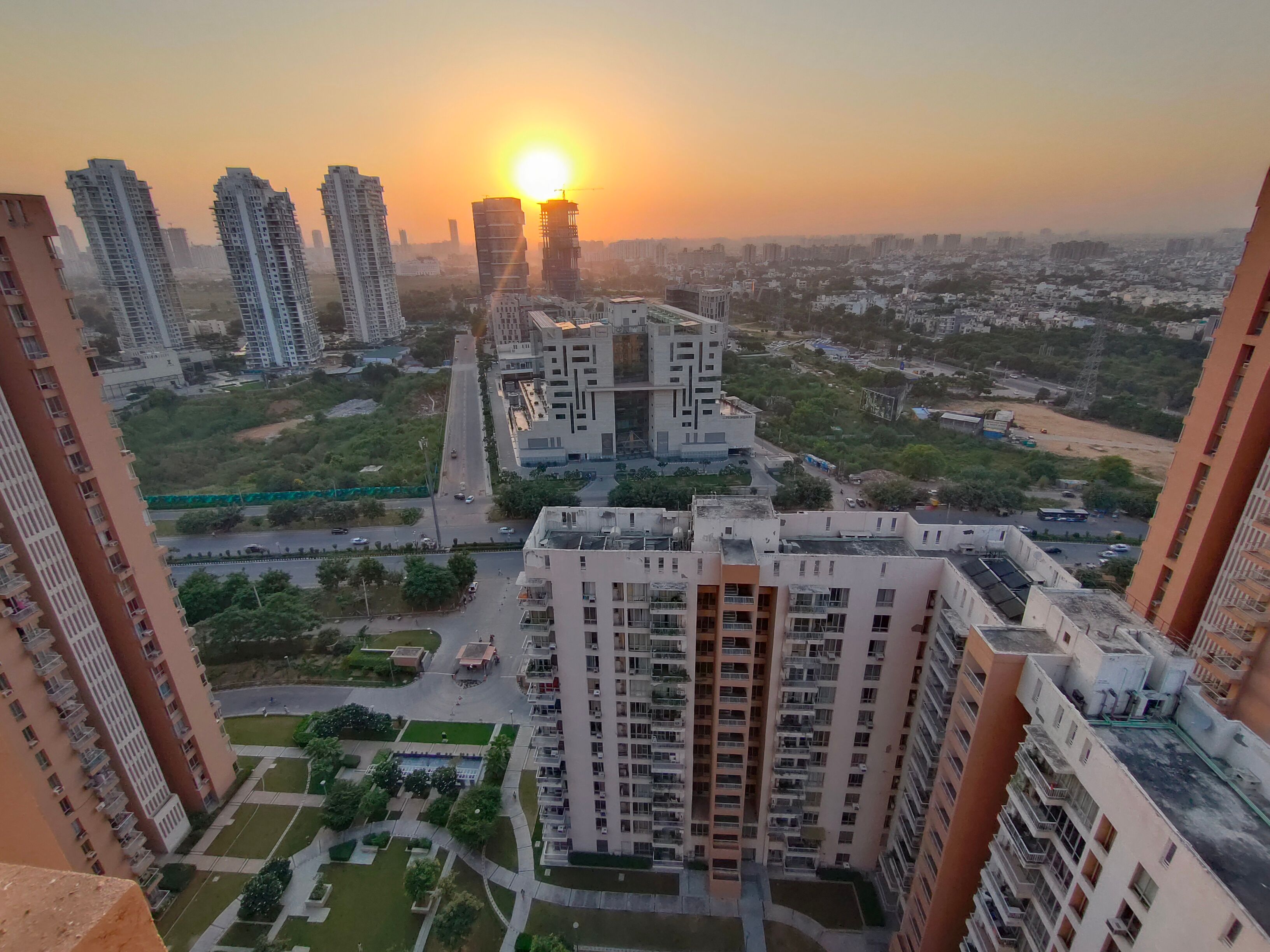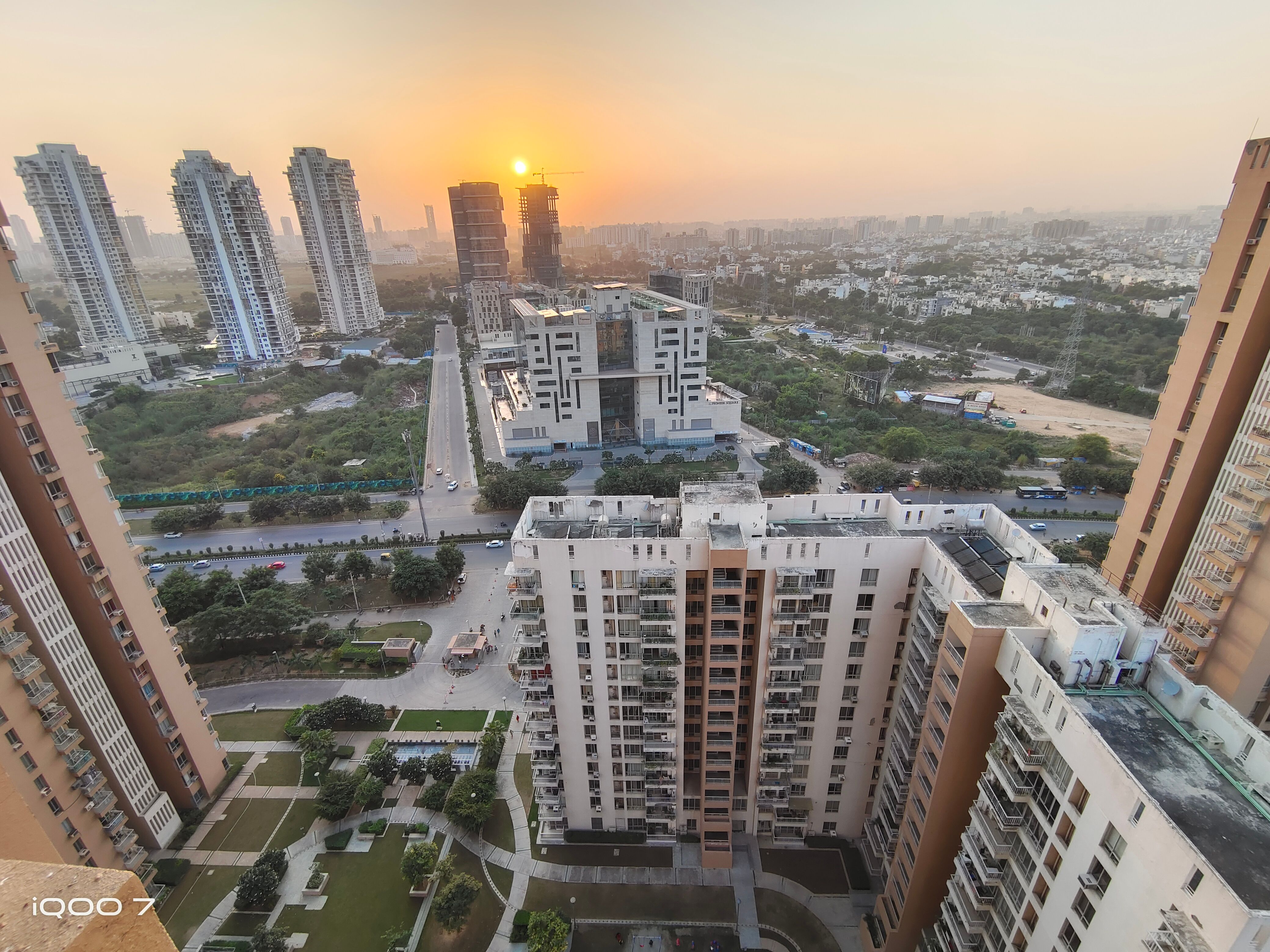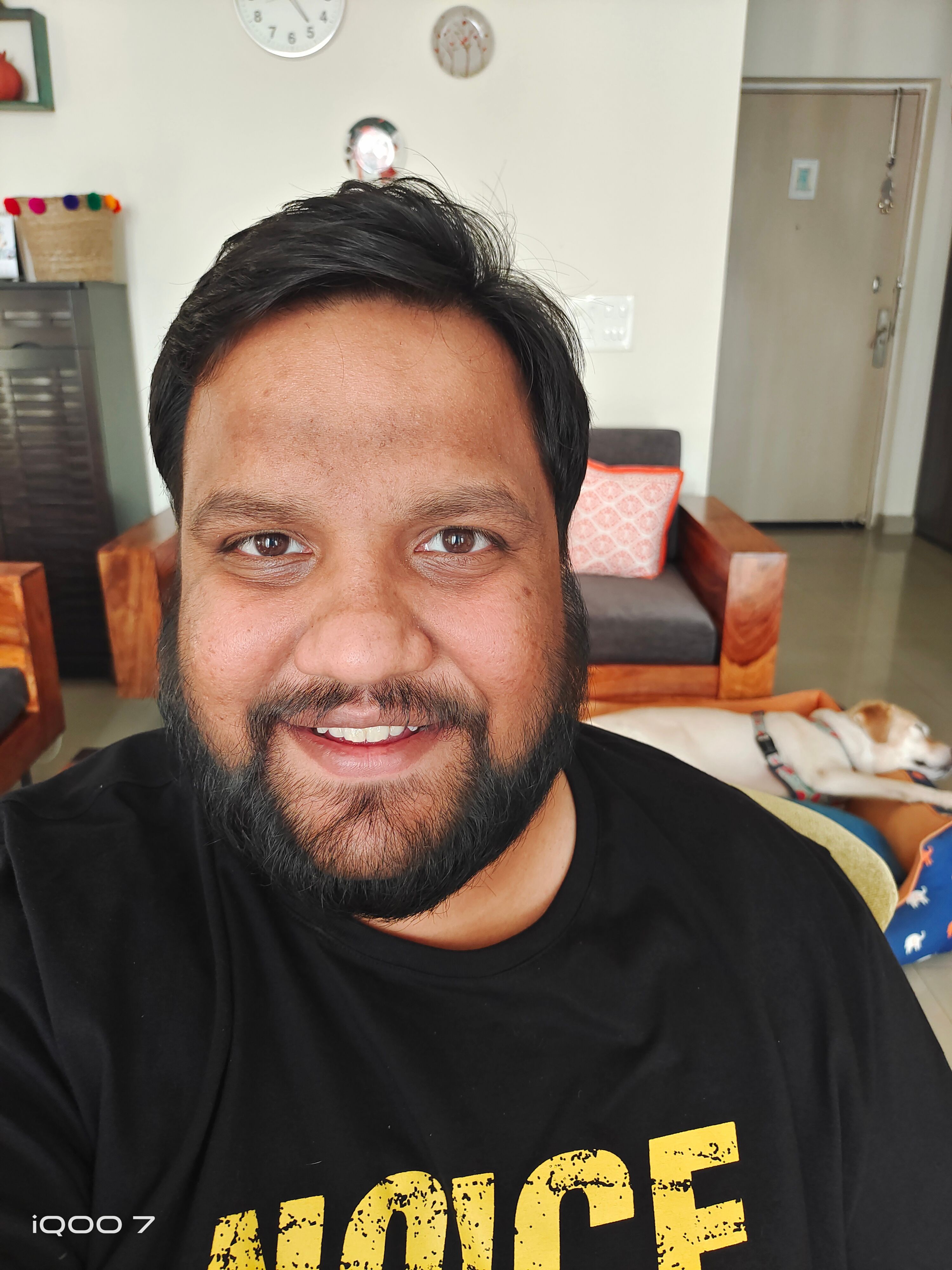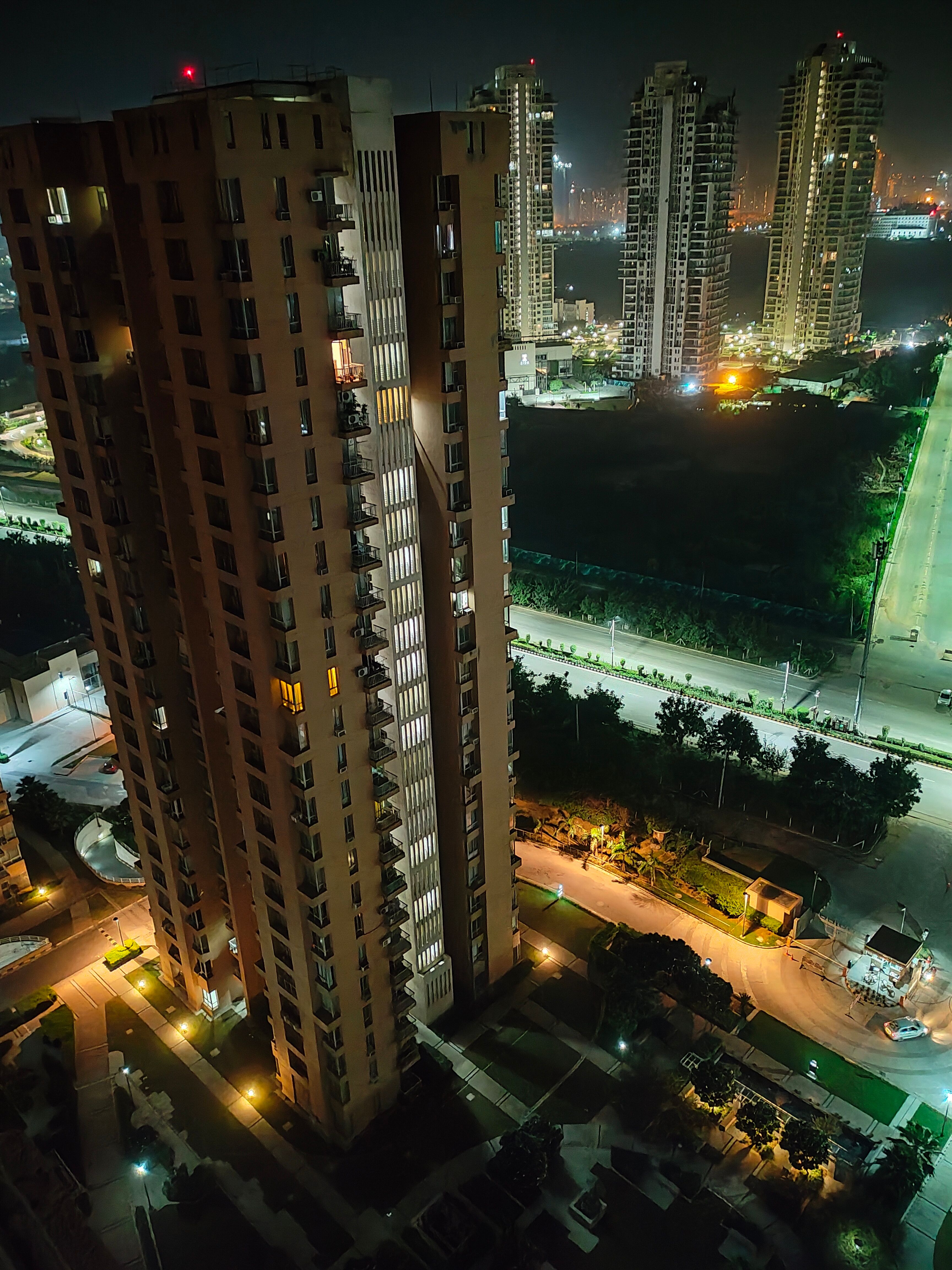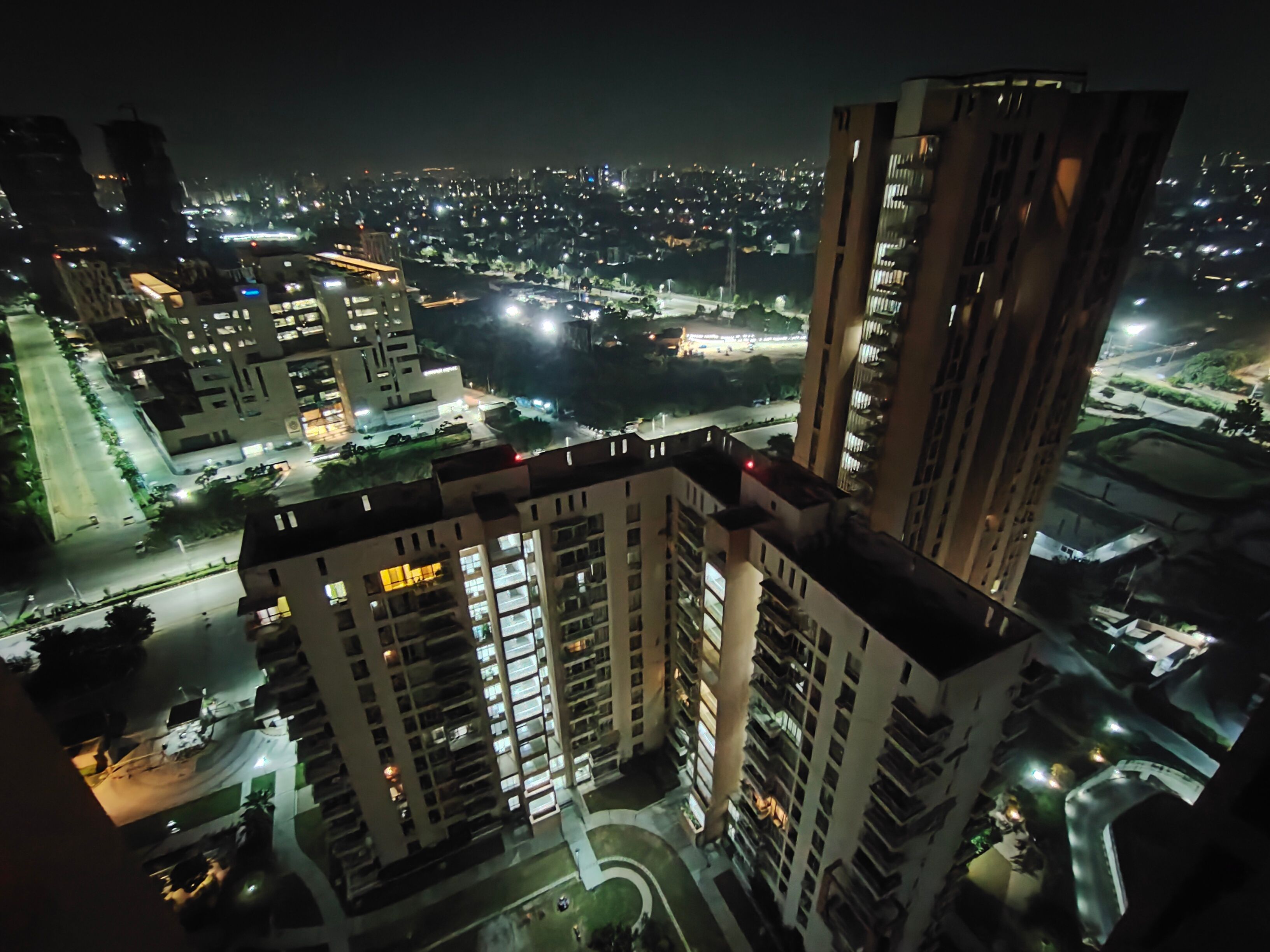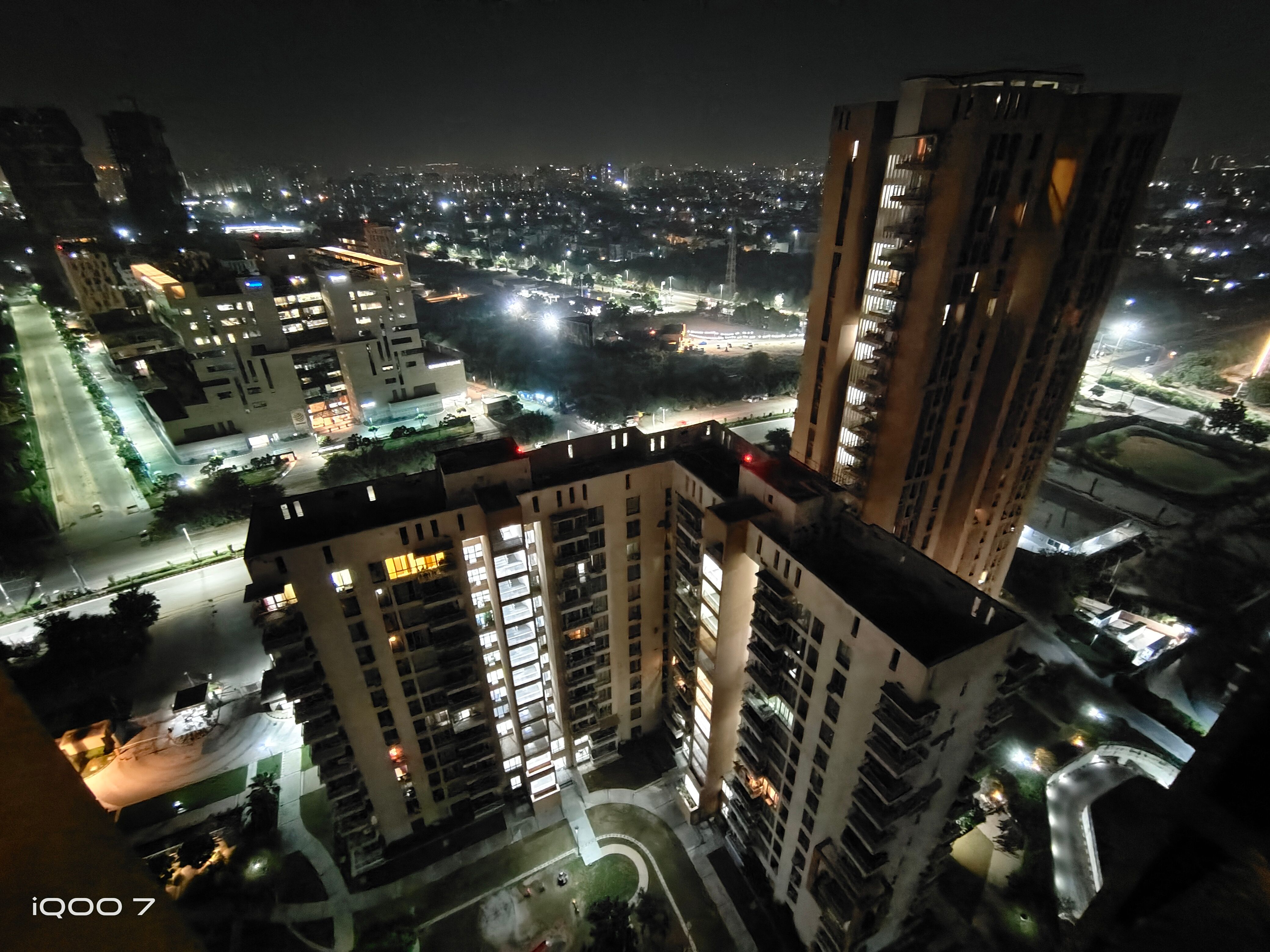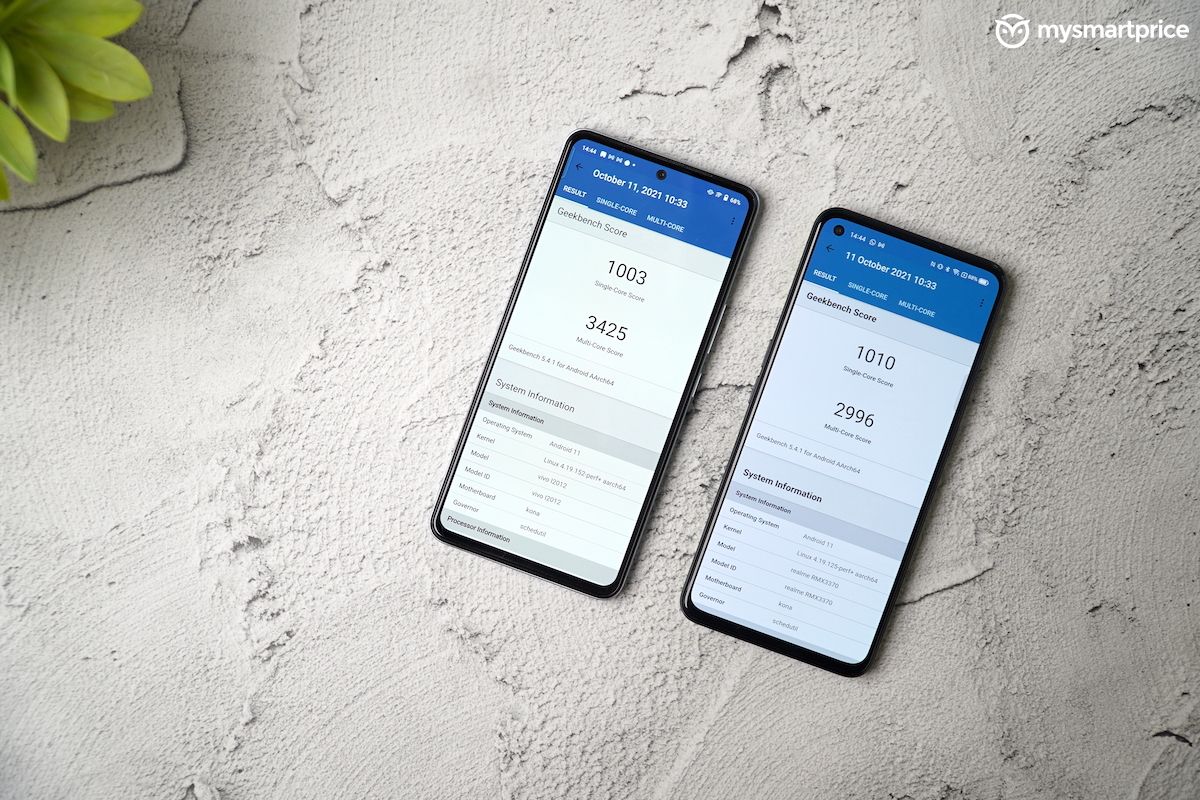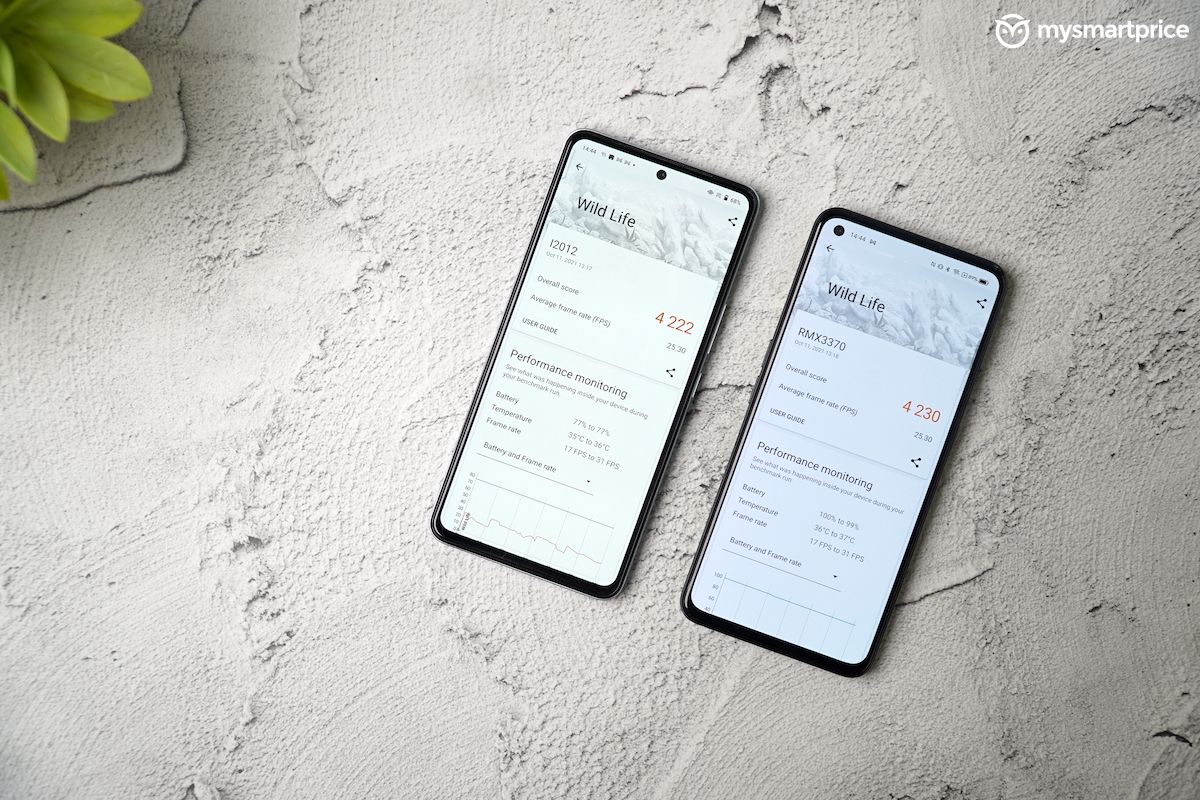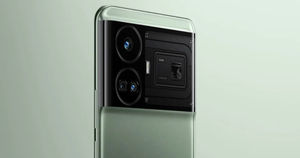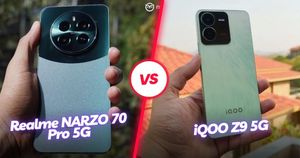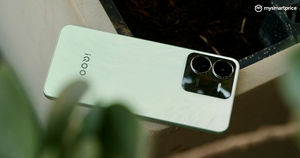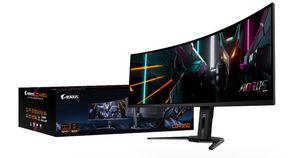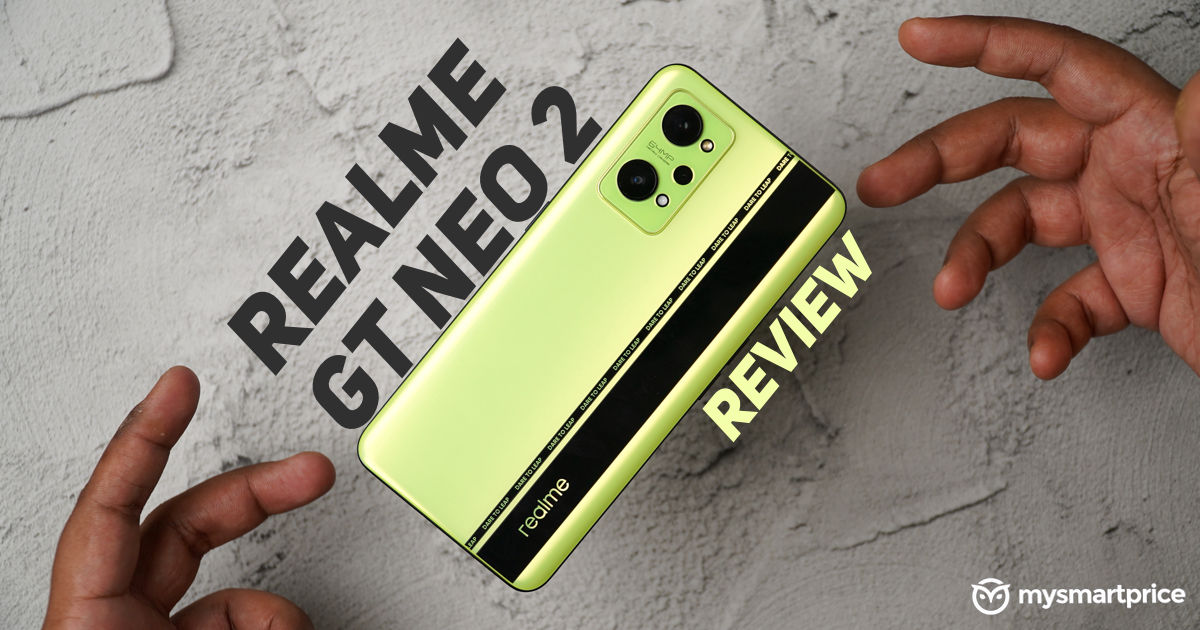
Now, that Realme’s X series is officially dead, the GT series is being bombarded with new devices. Today we are going to be talking about the – extremely gaudy to some, fashion-forward to others – Neo Green Realme GT Neo 2. But, don’t go by its looks. This phone lives up to the GT moniker with some careful tuning.
This is our detailed review of the Realme GT Neo 2. For context setting, I shall also compare the camera performance and the performance of the Snapdragon 870 chip inside the GT Neo 2 and one of my favourite phones of 2021 – the iQOO 7. Let’s go.
Design
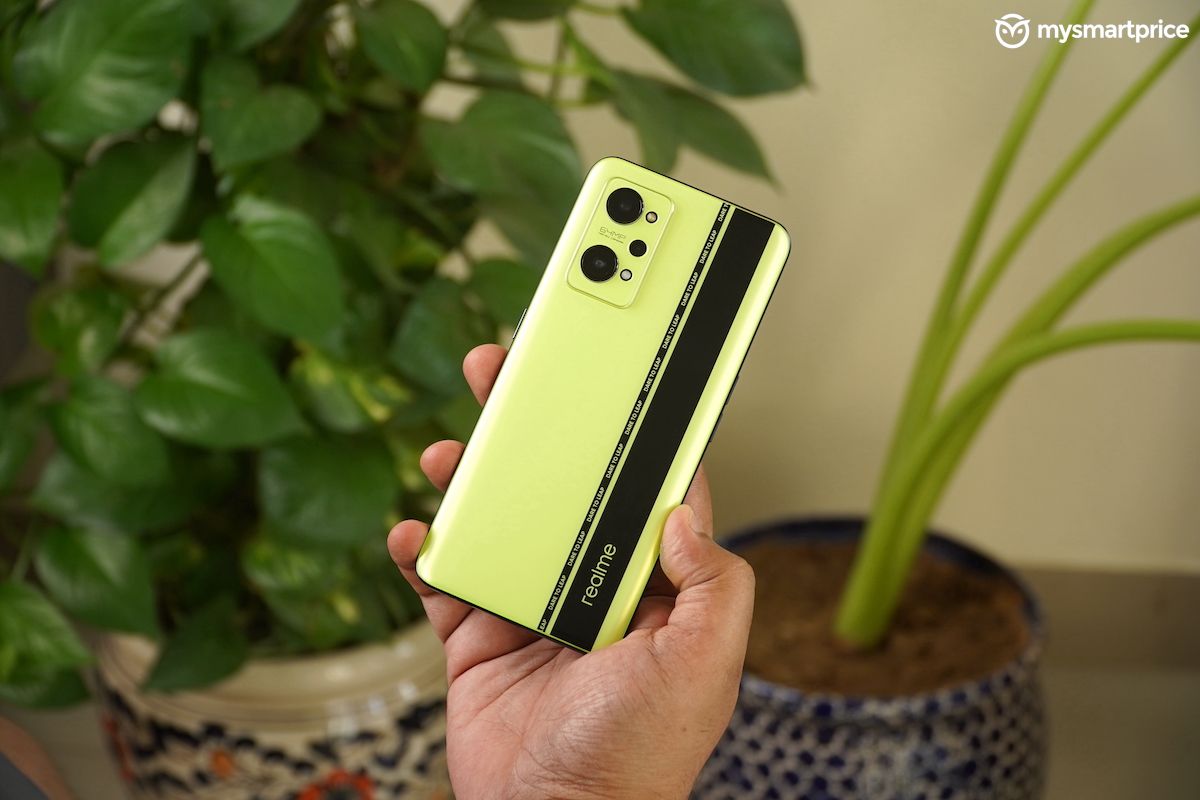
There’s one thing I admire about Realme, the company is extremely experimental with the design of their phones. I am sure Ranveer Singh will approve of this Neo Green Colour Realme GT Neo 2. I absolutely loathe it. But, that’s just my subjective opinion. Your mileage could vary. But, imagine pulling this phone out at a party, it’ll definitely attract a lot of attention – some disgusted, some delighted. That said, I feel the dual strips are excessive and could’ve been avoided or streamlined to make it look more attractive. It looks like a very tacky patch job. Now, if you are not a fan of this slimy green shade, there are a couple of other colours – Neo Blue and Neo Black for you to choose from.
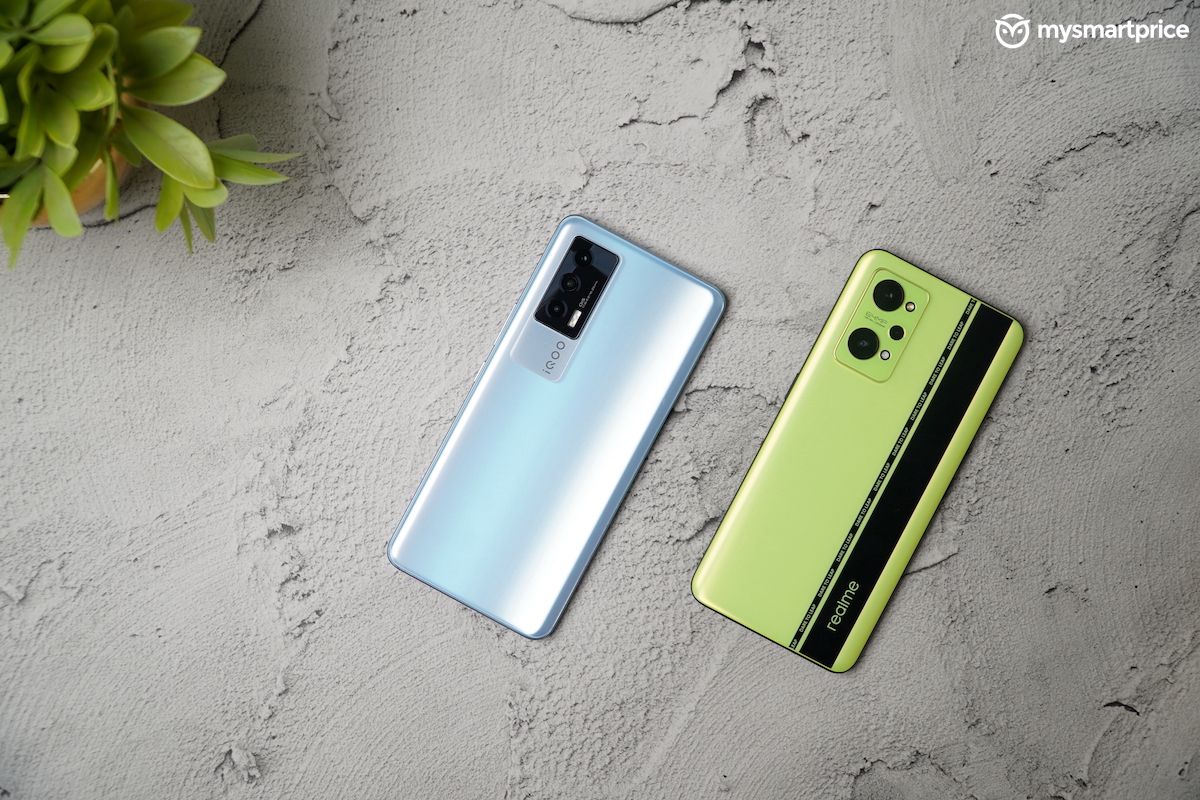
The other thing that I immediately noticed about the Realme GT Neo 2 is that it felt thicker and fatter than most other Realme phones launched in 2021, and the iQOO 7 that I was comparing alongside it. Thanks to the glass sandwich design with a matte Black plastic frame. Plus you get a larger 5000mAh battery on the GT Neo 2, which must’ve added to the bulk. Also, do you know how I can tell for sure that the ergonomics are great? Well, I could make the phone stand without any support thanks to the flat top and bottom, and equal weight distribution. And, it is not as wide as the iQOO 7 making it comfortable to hold and use with one hand too.
Now, there’s also a camera bump that extends a fair bit out of the rear but that can be negated by covering the phone up in the nice bundled case that you get inside the box. Also, I’d like to highlight that the placement of the power button on the right and the volume button on the left is absolutely ideal. I could easily hold the phone in one hand, lock the screen with my thumb and increase/reduce the volume with my middle finger, all without having to do any hand gymnastics. However, there are a few issues with the design:
- There’s no headphone jack despite being so thick.
- The Type C port at the bottom can still only do USB 2.0 speeds.
- Finally, I don’t care much about it, but for those who do, there’s no microSD card support but you can add two nano SIM cards in the SIM tray.
Essentially, since the candybar form factor is now mostly standard on smartphones, the best brands can do is experiment with Colour Material Finish (CMF). And, Realme just goes all out in that aspect. If I had to use this phone out in the open, you can be sure that I am going to be hiding it in the Black silicon case that you get in the box. Thank God, Realme didn’t bundle a transparent case.

Display
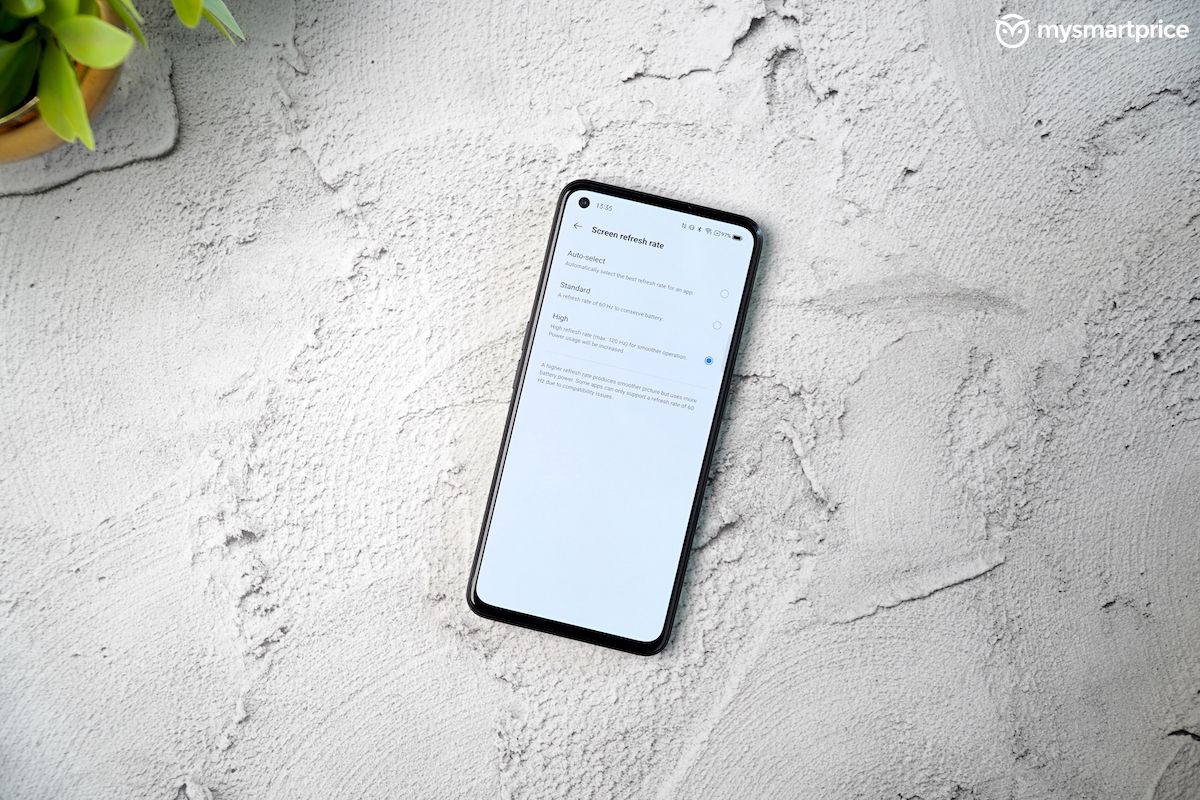
Before I even jump into the specifics, the Realme GT Neo 2 is the best display yet on a Realme phone, but it is not without caveats. It is a 6.62-inch E4 AMOLED panel sourced from Samsung with FHD+ resolution and 120Hz refresh rate. From within the settings app, you can choose to use the phone at 60Hz or 120Hz or let the system Auto Select the refresh rate as per the visual being displayed. Essentially, it can switch between 30Hz, 60Hz, 90Hz, and 120Hz, which also helps with power efficiency. However, what I noticed is that Realme’s algorithm makes jarring shifts when you choose the Auto Select mode. And, I was more content using it in the constant 120Hz setting.
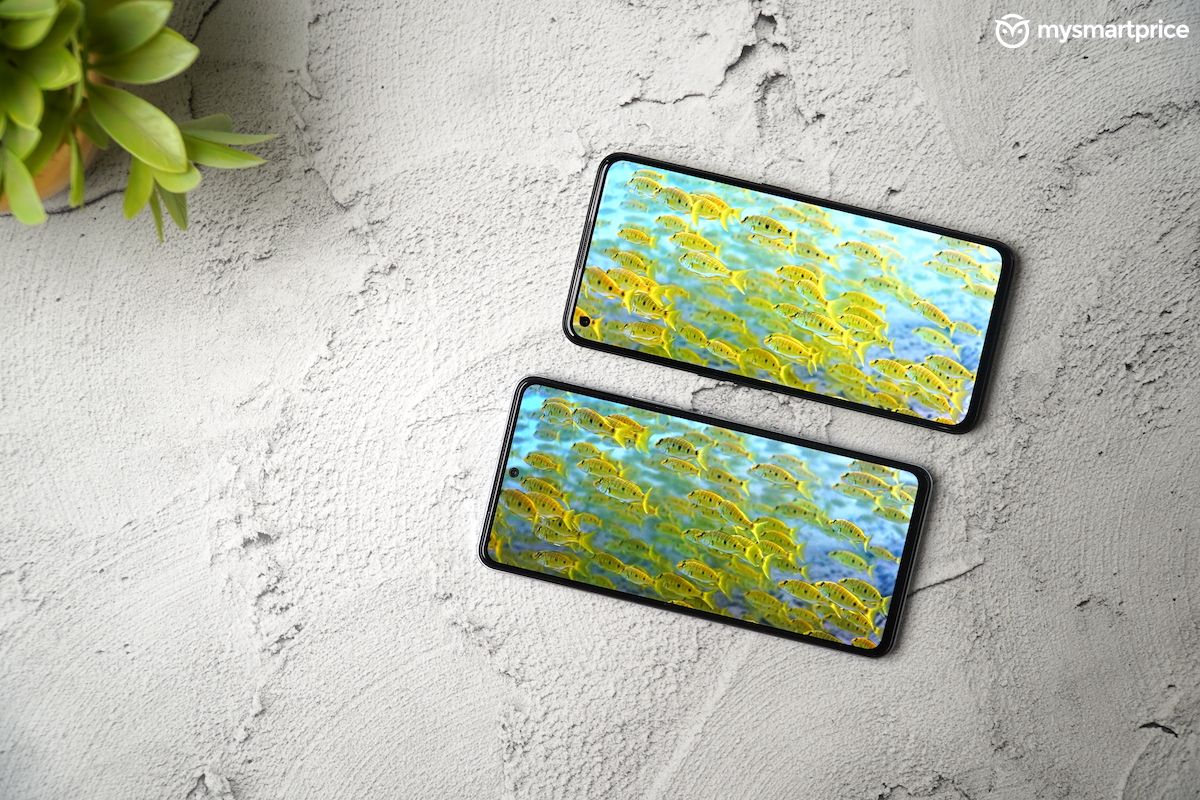
What’s also worth noting is the touch sampling rate of 600Hz. Obviously, this is the best we’ve seen on a phone till date, not counting the iQOO 7’s instant 1000Hz touch sampling rate when you touch the screen. And, it shows in the performance as well, especially when you are gaming. Now, there’s one thing I wanted to highlight and that is the Game Space tool lets you increase the Touch Sensitivity on a slider. Realme told me this slider is generally for phones with lower touch sensitivity rate and are not as good as the GT Neo 2, which is optimised for games by default. By the way, when you aren’t playing games the touch sampling rate drops to 300Hz intuitively.
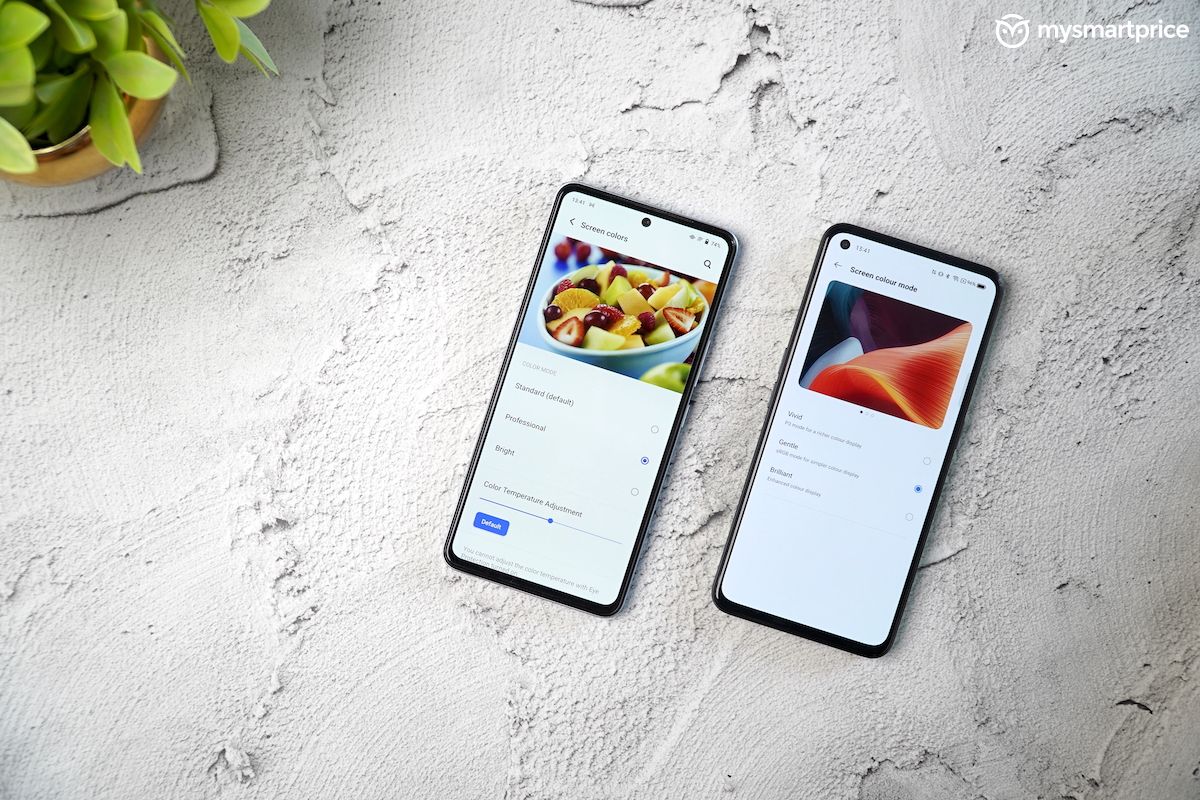
Realme claims this is their most colour accurate display. Maybe, in the Gentle sRGB mode it has a low DeltaE but it is definitely not as colour accurate as the iQOO 7 in Professional mode. Having said that, this is definitely the brightest display on a Realme phone…yet. You can reach up to 500 nits of brightness when you push the brightness slider to maximum and it can reach up to 800 nits in auto brightness mode. In fact, Realme has upgraded the ambient light sensors with 360-degree triple ambient light sensors and I noticed that it was very, very well tuned. And, to top it off, the phone can also touch a peak brightness of 1300 nits in HDR mode as well.
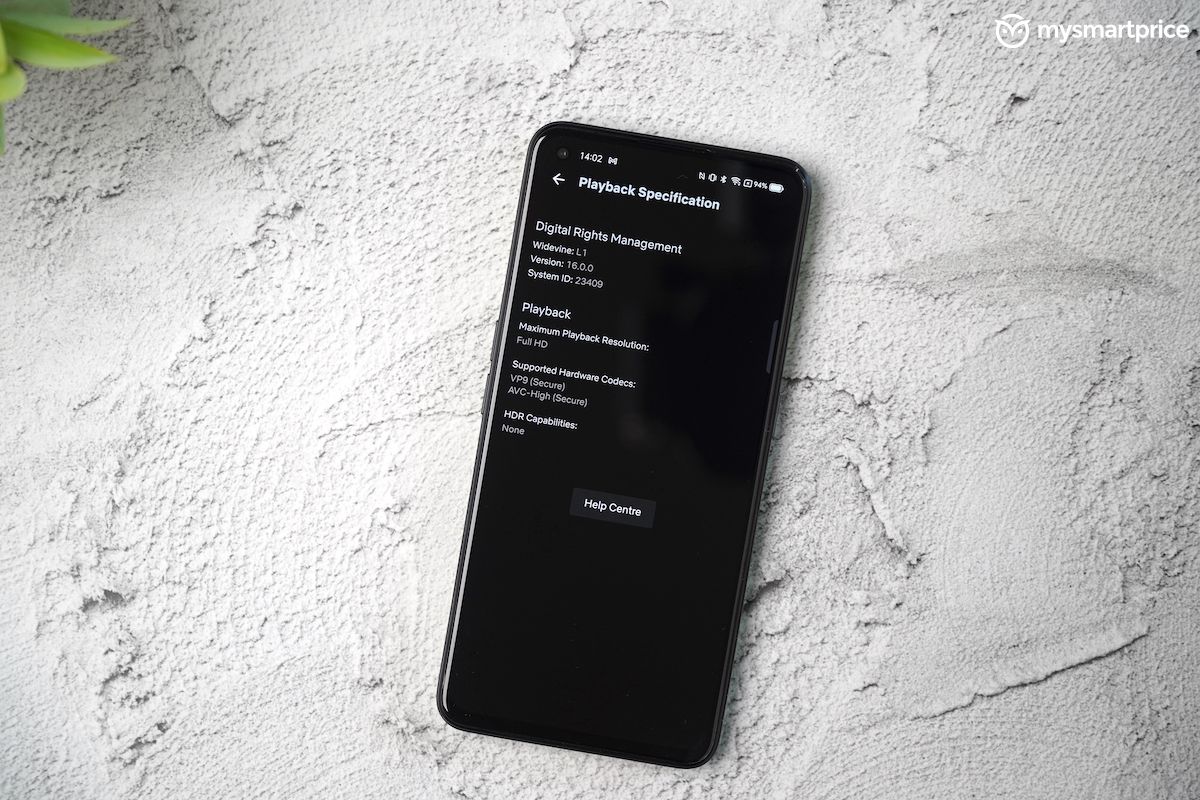
Talking about HDR, in the never-ending list of firsts, this is also the first Realme phone to get HDR10+ certification. However, Prime Video didn’t play back HDR10+ content in HDR. And, Netflix doesn’t offer HDR support either. So, all you can do is enjoy HDR content on YouTube.

However, I am super happy about the fact that Realme has added an X-axis linear motor. The haptic feedback is sublime on the GT Neo 2 and the best yet on a Realme phone. Another part of the display is the in-display fingerprint scanner and it is stupendously fast at unlocking your phone. But, the same is true for the iQOO 7 as well.
Software

We’ve spoken at length about Realme UI 2.0 based on Android 11. It is a clean and intuitive operating system with a lot of customisation options and useful features too. For example, Game Space is awesome as it lets you run WhatsApp in a floating window mode. And, it also shows realtime FPS data as well. I do also like the Smart Sidebar and Quick Launch options, both of which can be configured from the Convenient Tools options.
Apart from that, on Realme UI 2.0, there are no unnecessary advertisements in the UI or first party apps. But, there is a lot of bloatware pre-installed. It annoys me to no end that apps like Moj and Josh are already present on a phone that I paid good money for. Realme could’ve avoided it. Anyway, now with the launch of Color OS 12 (Review), Realme UI 3.0 should be right around the corner. So, I am excited for that one too.
Camera
The Realme GT Neo 2 has your bog standard triple camera setup that has become common on all Realme phones lately. You get a 64MP primary shooter, an 8MP ultrawide, and a 2MP macro. And, on the front, there is a 16MP selfie shooter. Let’s test these mediocre specifications against the iQOO 7 and I am going in with low expectations to begin with. Maybe, Realme can surprise me?
- I am not going into the details of the other modes but I wanted to talk about the really cool Street mode on the Realme GT Neo 2. This mode has a few predefined filters and it lets you shoot in RAW as well. Plus you have the option of focus peaking for sharper shots. Now, when I shot direct shots using the Street or the Black and White filter, I noticed that the phone tends to over sharpen a tad too much. In any case, these are unique styles that could come in handy when you are doing run-and-gun shooting on the go.
- When it comes to sensor sharpness in the pixel-binned daylight shots on the GT Neo 2 and the iQOO 7, I found the Realme algorithm to over-sharpen the finer textures. When you pixel peep, it looks unnatural. While the iQOO 7 doesn’t do much over-sharpening, it does feel soft in certain areas. Technically, the iQOO 7 offers a superior algorithm here but the sensor might not be as sharp as the Realme GT Neo 2, also because it has the advantage of a slightly higher resolution. Most sensors these days are fairly capable of handling daylight shots with ease.
- As for the JPEGs straight out of the camera without any AI processing, the iQOO 7 offers a closer to natural colour science. The Realme GT Neo 2 tends to pick up the Reds and makes them deeper. I tend to prefer the iQOO 7’s straight out of camera look over Realme’s. The colour of the chair, in particular, is a super let down. It doesn’t look this dull in real life.
- Now comes the part of the comparison where iQOO’s algorithm obliterates Realme. As you can tell from these samples, whether it is highlight control or bringing out details from the shadows or maintaining the colours, the iQOO 7’s HDR shot is way better than the GT Neo 2’s. In the second sample, you can see the extremely tone-mapped look with a flat dynamic range on the Realme GT Neo 2’s shot. This is very unnatural processing, which some folks might prefer but is technically the inaccurate way of doing picture stacking and HDR processing.
- And, it also goes without saying that the iQOO 7’s 13MP ultrawide angle camera captures sharper details, better dynamic range, and more accurate colours here. The Realme GT Neo 2 has just over-sharpened unnecessarily.
- Furthermore, the iQOO 7 also uses the ultrawide for its macro shots. And well…the results are there for you to see on screen. It literally sucker punches Realme’s 2MP macro camera into oblivion.
- Moving on to human subject shots captured using the rear camera, again the iQOO 7 wins. I’d like to reiterate this picture was captured using the rear primary camera on both the phones by myself. Anyway, while Realme’s picture is super sharp and the natural bokeh looks good too, you can clearly tell that iQOO 7 offers a close-to-natural facial tone. And, it is plenty sharp too. But, when it comes to shots against harsh light, the iQOO 7’s picture offers better control over the highlights on the rear and a nice sharp face as well. The Realme GT Neo 2’s shot is super duper soft, in comparison.
- Now, while the facial tone in the iQOO 7’s portrait shot is pretty good, Realme offers sharper textures and, more importantly, better semantic segmentation as well. iQOO’s portrait algorithm has always had edge detection issues.
- In selfies too, Realme has only one advantage and that is a wider field of view. Otherwise, the iQOO 7, as you can tell from our first set of samples here, is sharper, offers a slightly better facial tone, and controls any exposure peaks on the oily portions of my face. And, the HDR selfies look better on the iQOO 7 too. Again, the iQOO 7 wins handily.
- While iQOO did lose out on the portrait round using the rear camera, it makes a comeback in selfie portraits. It has the better edge detection, finer details on the face, and a very colour accuracy too.
- Finally, coming to low light shots. The 48MP IMX598 sensor on the iQOO 7 has better light sensitivity as you can tell from our non Night mode shot here. Realme does improve on the exposure with the Night mode but it is still no match for the iQOO 7. Plus, the over-sharpening algorithm goes on overdrive here. Terribly overprocessed images irritate me to no end. The second set of samples, in even dimmer light conditions, only proves the fact that the iQOO 7 is better in low light shots.
- In low light ultrawide night mode shots, Realme tends to open the shutter for a longer duration and hence the shadow portions are better exposed. iQOO is much more subdued in that regard. Therefore, you will notice crushed shadows. In any case, the iQOO 7 is sharper than the Realme GT Neo 2 here. But yes, you might want to manually increase the shutter in order to expose the shadows better on the iQOO 7.
- When you take low light selfies in less than ideal light, the iQOO 7’s selfie camera does a fantastic job even without Night Mode on. With Night Mode on it tends to oversharpen, which I am not a fan of. Having said that, I still think I’d use iQOO’s low light selfie over the Realme GT Neo 2. However, in extreme low light situations where the iQOO 7 has to fire the AI Extreme Night mode, the face whitening and skin smoothing effect is overbearing. It looks really ugly.
- You know the AI Highlight video in OPPO and Realme phones? Well, it is trash. The quality of the night footage is absolutely horrendous just for the sake of a brighter video footage. You’ll see the GT Neo 2’s video here is struggling with a lot of focus hunting, noise, and just general softness along with brighter colours. Anyway, I switched to our regular 4K 60fps video recording. And here, Realme actually does better with more natural colours, brighter exposure, and sharper details. Pretty good job done here.
- Both the phones can shoot 4K 60fps video, albeit without stabilisation. And, the bit rate is the same on the phones, so detail retention is going to be very similar. However, sound recording is better on the Realme GT Neo 2 and the colour space is much wider on the iQOO 7 with support for the REC 2020 colour space. In comparison, the GT Neo 2’s footage looks muted. But, iQOO nerfs the quality of the footage when you are shooting in 4K 30fps quality. You get 1/3rd the bitrate and no Rec 2020 colour space either. Therefore, the quality of the footage looks better on the GT Neo 2. But the GT Neo 2 has stupid focus hunting issues, which happened a lot while recording video.
- There’s a special Ultra Steady mode on both the phones but the GT Neo 2 does it better. Ultrawide angle video recording is nearly identical on both the phones when it comes to stabilisation. But, the quality of the footage and the noise control in the shadows is better on the iQOO 7. Plus, the iQOO 7 offers 60fps video recording at 1080p as well, whereas the GT Neo 2 tops out at 1080p 30fps.
- Finally, when it comes to video recording using the front camera, both the phones can do only up to 1080p 30fps resolution. The quality of the footage, which includes the facial tones, the colour accuracy, and the dynamic range performance is better on the iQOO 7. It also offers electronic image stabilisation. However, once again, Realme’s sound recording is better than the iQOO 7.
I have no hesitation in saying this, the iQOO 7’s camera setup provides far more superior results to the Realme GT Neo 2.
Performance
The GT lineup of Realme phones are aimed at providing stellar performance and the GT Neo 2 is the best phone with Snapdragon 870 we’ve tested here at MySmartPrice. In our benchmark tests, it scored better than our previous champion iQOO 7 in our AnTuTu run. Geekbench and 3DMark scores were within touching distance of each other too.
But, what took me by surprise was the CPU throttle test. Just take a look at that gorgeous chart. We managed a sustained CPU stability of 91%, which is the highest yet in our 30 minute testing. And, the GT Neo 2 also scored a stability score of 99.5% in our 3DMark Wild Life test too. I think Realme is able to push such fantastic sustained performance thanks to the new Stainless Steel Vapour Chamber Cooling Plus technology, which includes a Diamond thermal Gel on the CPU. I noticed that it wasn’t reducing the heat drastically but at the same heat dissipation as other phones with Snapdragon 870, Realme was able to push the SoC to maintain peak performance for longer durations.
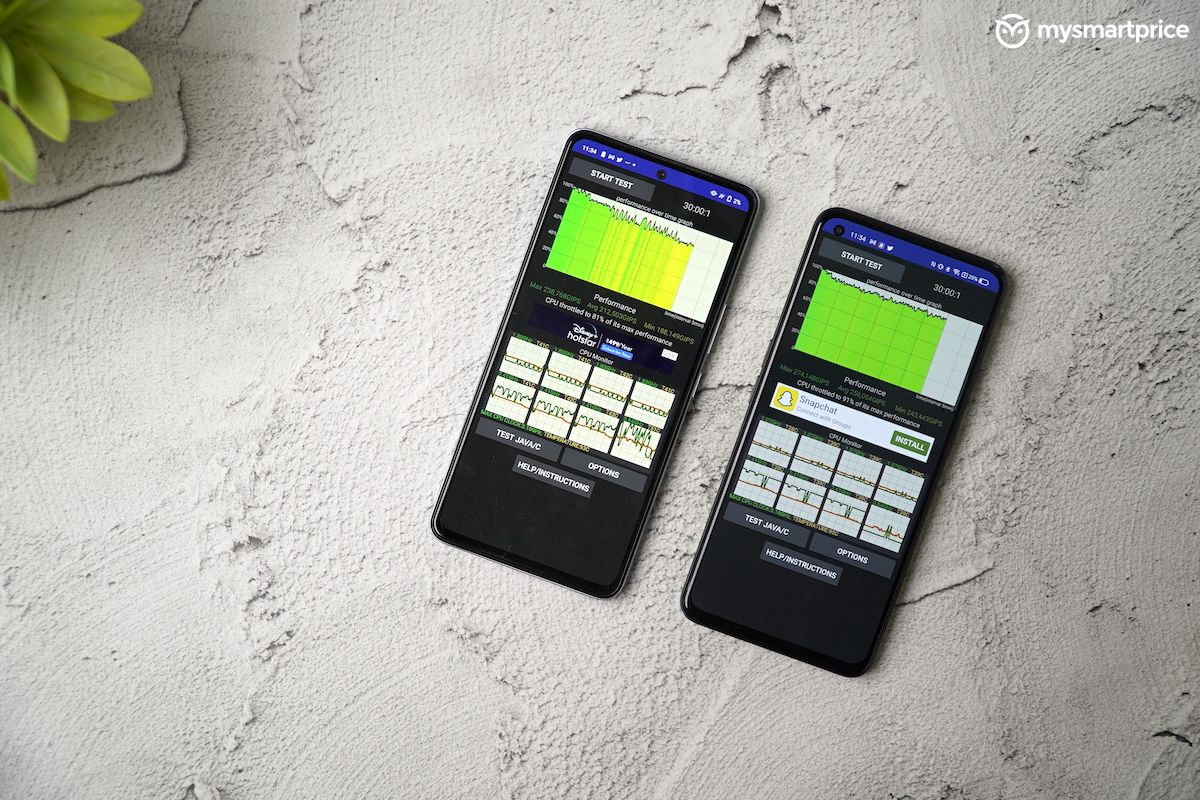
This was clearly coming through in the blazing fast daily performance and lag free gaming experience due to zero throttling even after long sessions of Call of Duty or BGMI. But, if we step back a bit, these are marginal gains over the iQOO 7 at best. And, rarely was I able to even tell the difference.
Also aiding this gaming experience is the stereo speaker setup on the phone, where the earpiece acts as the second speaker. It is loud and clear and it supports Dolby Atmos too. Although, I need to hark back to the point that the missing headphone port is definitely the biggest letdown. It would have rounded off the specs nicely and I would have had no hesitation in calling this the one of the best Android gaming phones out there.
Quickly running down the other specs, you get up to 12GB of RAM, which can be further expanded by up to 7GB using the Dynamic Ram Extension or DRE feature. Which, till today, feels more like placebo to me. You can also configure up to 256GB of internal storage, which is of the UFS 3.1 kind. That about sums it up.
Also Read: What is Virtual RAM? How Does it Work on Smartphones? Is It Really Effective?
Network
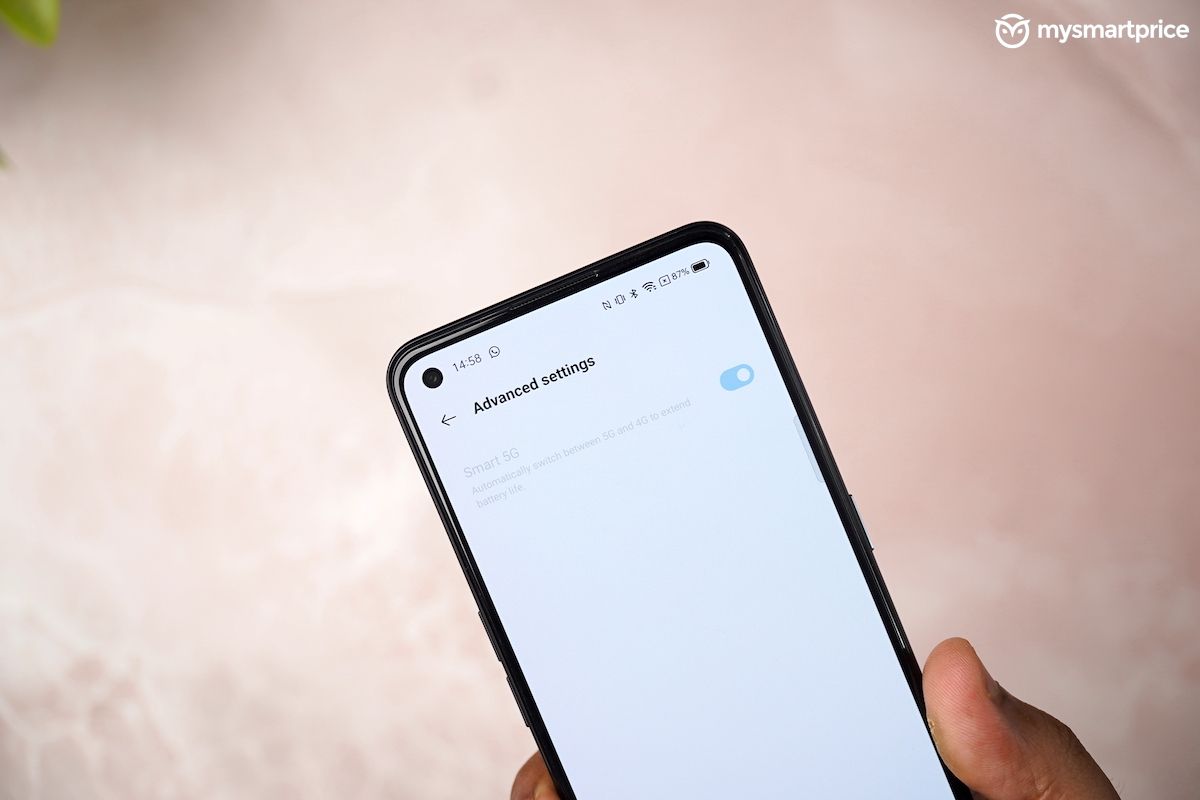
The Realme GT Neo 2 does support 4G carrier aggregation plus the network connectivity and the earpiece quality in calls was A+. No complaints there. Plus, you get support for eight 5G bands and a new feature called Smart 5G where the phone intelligently switches between 4G and 5G depending on bandwidth availability, and saves battery life in the process. There’s also support for Wi-Fi 6, which is standard with all Snapdragon 870 phones.
Battery Life
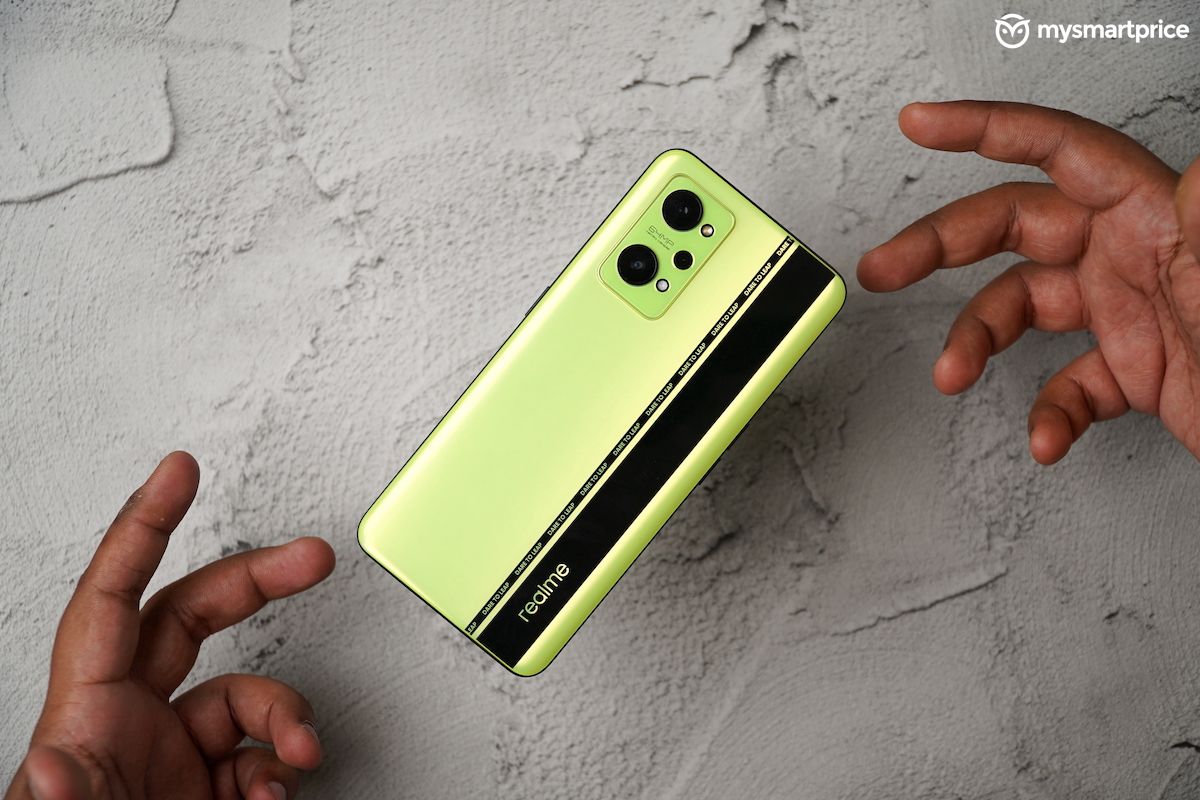
We are already aware that Realme bundles the fastest 65W SuperDart chargers with its phones. This charger can charge the GT Neo 2 from 0 to 100 in just 36 minutes, which is the number advertised by Realme and the number I managed to actually achieve in my testing as well. But, here’s the kicker, Realme has also fitted the phone with a large 5000mAh battery and the battery life on the GT Neo 2 is fantastic. With constant 120Hz and Always-on Display switched on, I got over 7 hours of SoT.
You can eke out 8 hours easily with Auto Select refresh rate. This is possibly one of the best battery backups I’ve managed to achieve from a flagship Android phone this year. And yes, it is even better than the ASUS ROG Phone 5.
Also Read: Asus ROG Phone 5 Review: A Hot-Headed Gaming Monster
Should You Buy the Realme GT Neo 2?
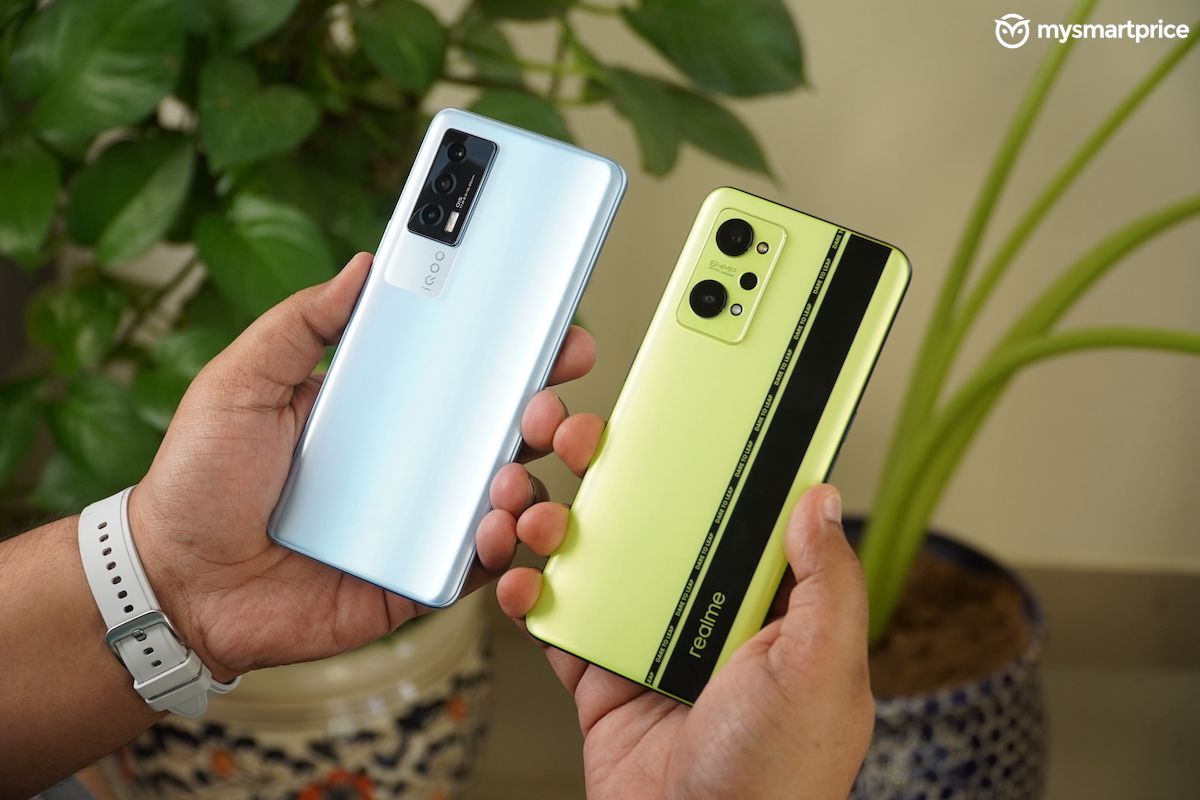
Looks like Realme saved the best for the last. The Realme GT Neo 2 is easily the best Realme phone of 2021. But unfortunately, camera performance continues to be every Realme phone’s Achilles Heel this year. Which makes the iQOO 7 the more well rounded experience thanks to the better cameras on the phone. The GT Neo 2 somehow reminds me of the very first OnePlus phones, such as the OnePlus One and Two, where performance would always take precedence over the camera.
Anyway, if you don’t care much about accuracy in colour science or good dynamic range performance as much as I do, the GT Neo 2 will probably interest you more. It is also a battery champ, for what it is worth. Another option worth considering is the OnePlus Nord 2. I’ve already spoken at length about that phone. Go check out our review if you haven’t already.
So, I finally see some clarity in Realme’s market positioning. Let’s see how it shapes up in the future. What do you folks think of the Realme GT Neo 2? Let me know in the comments below.
